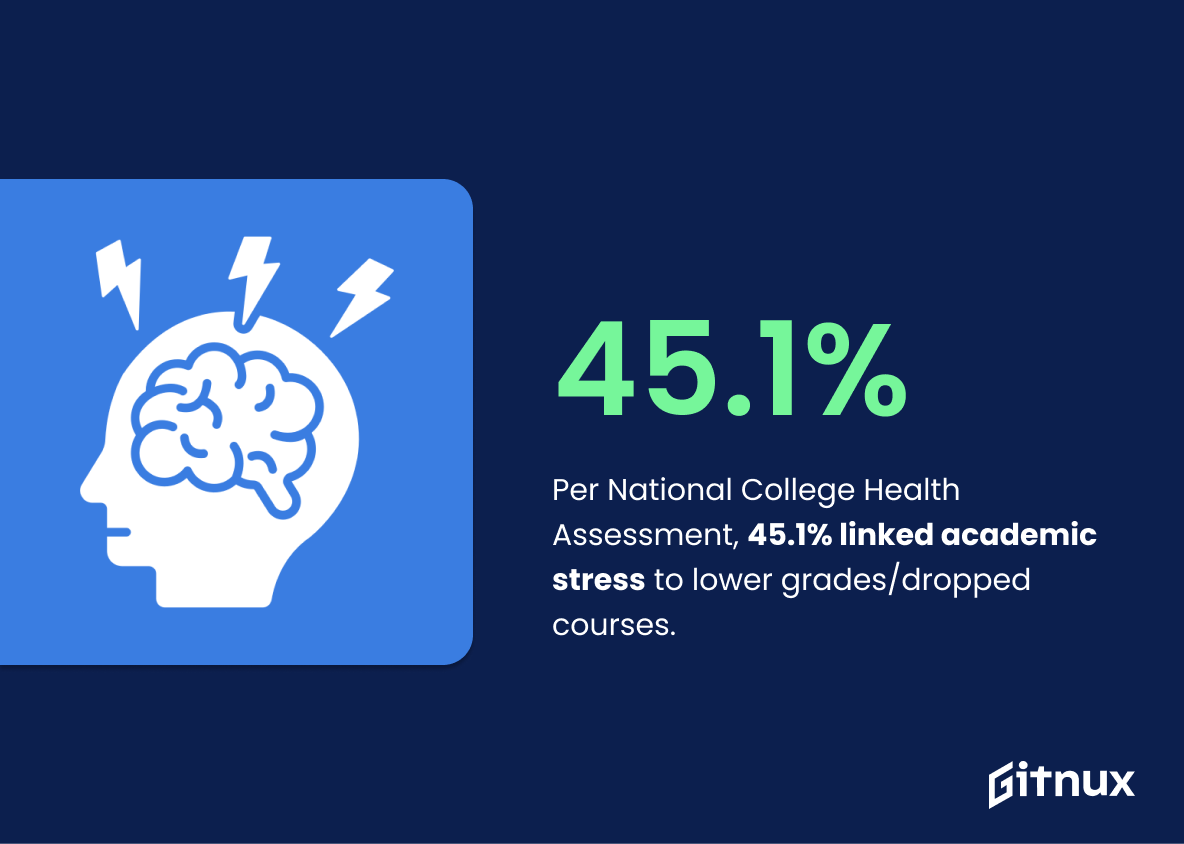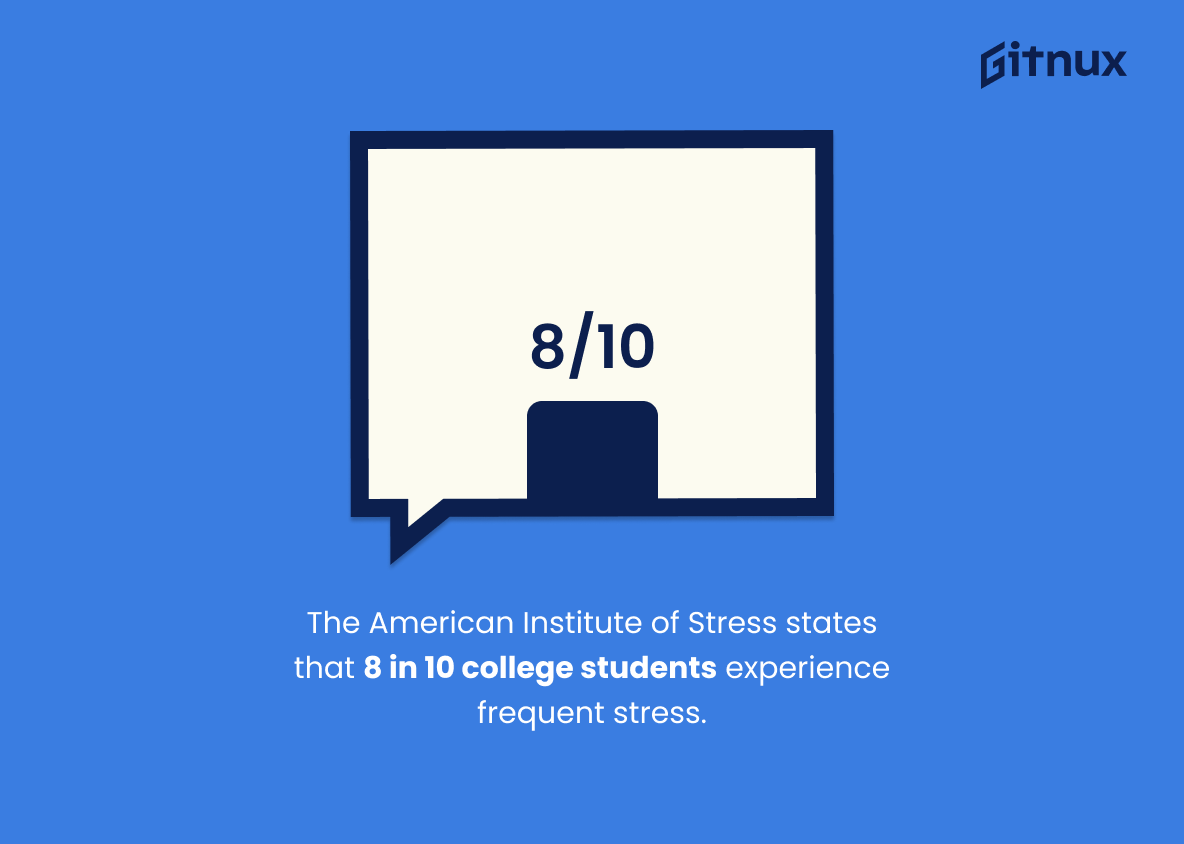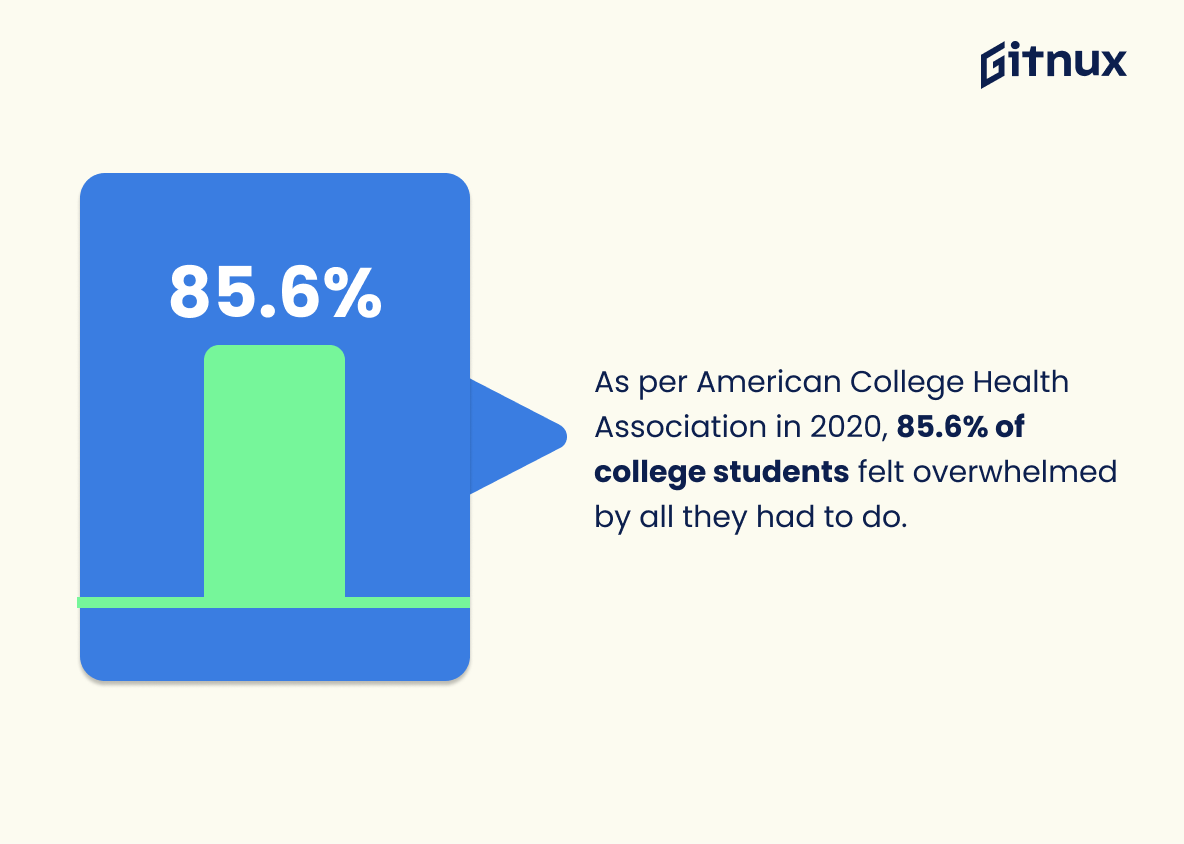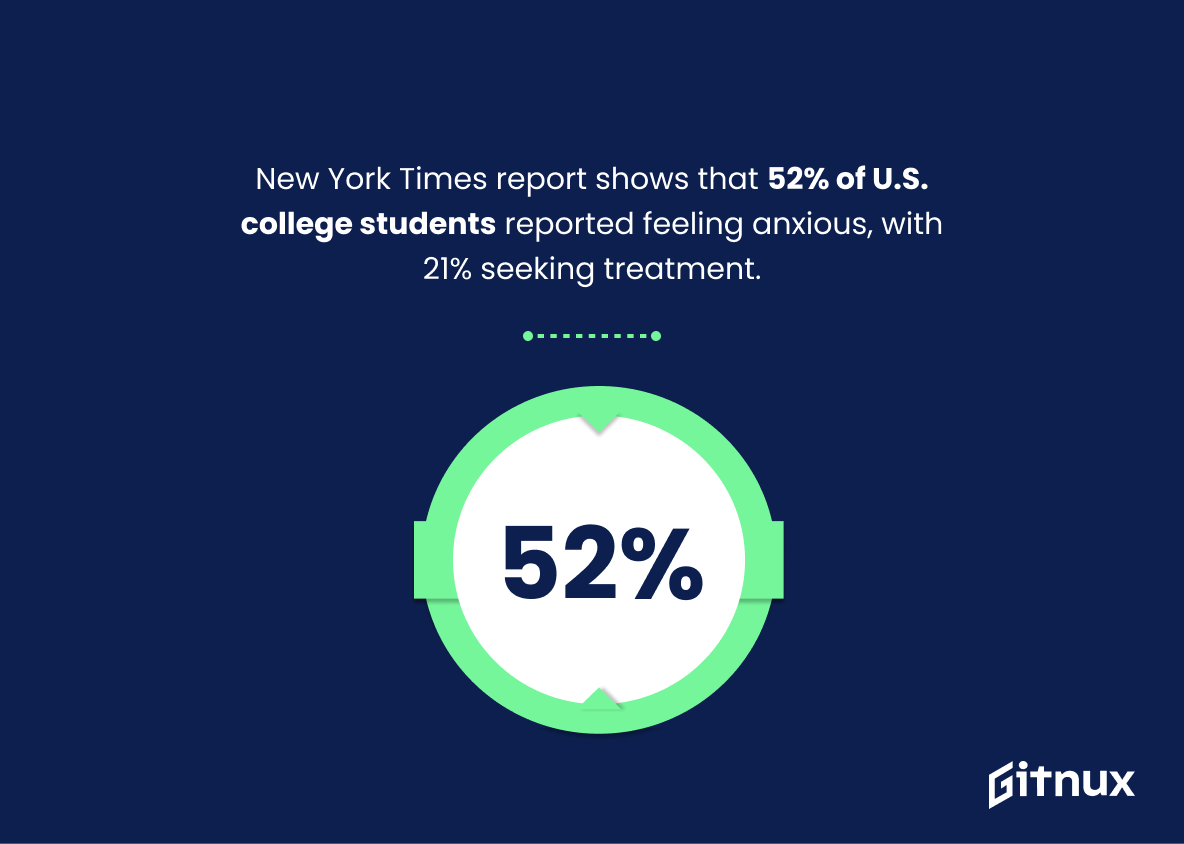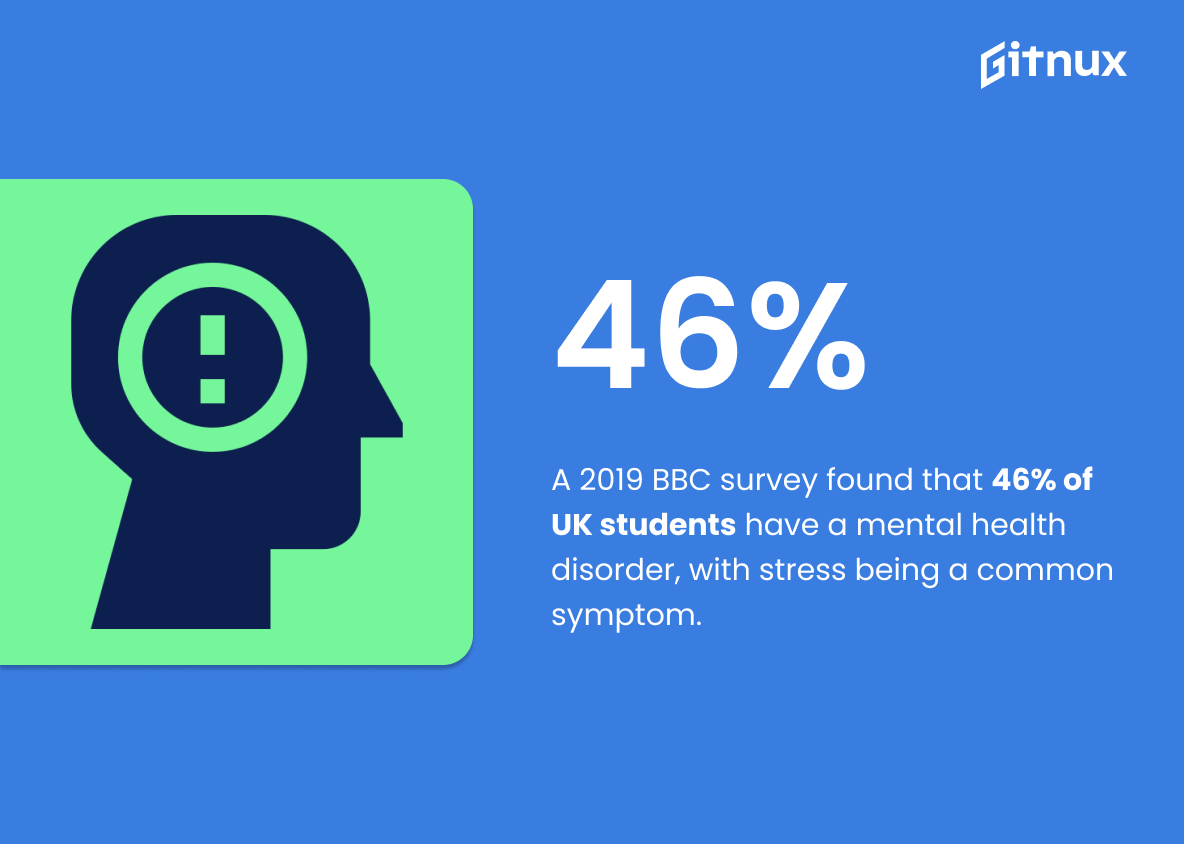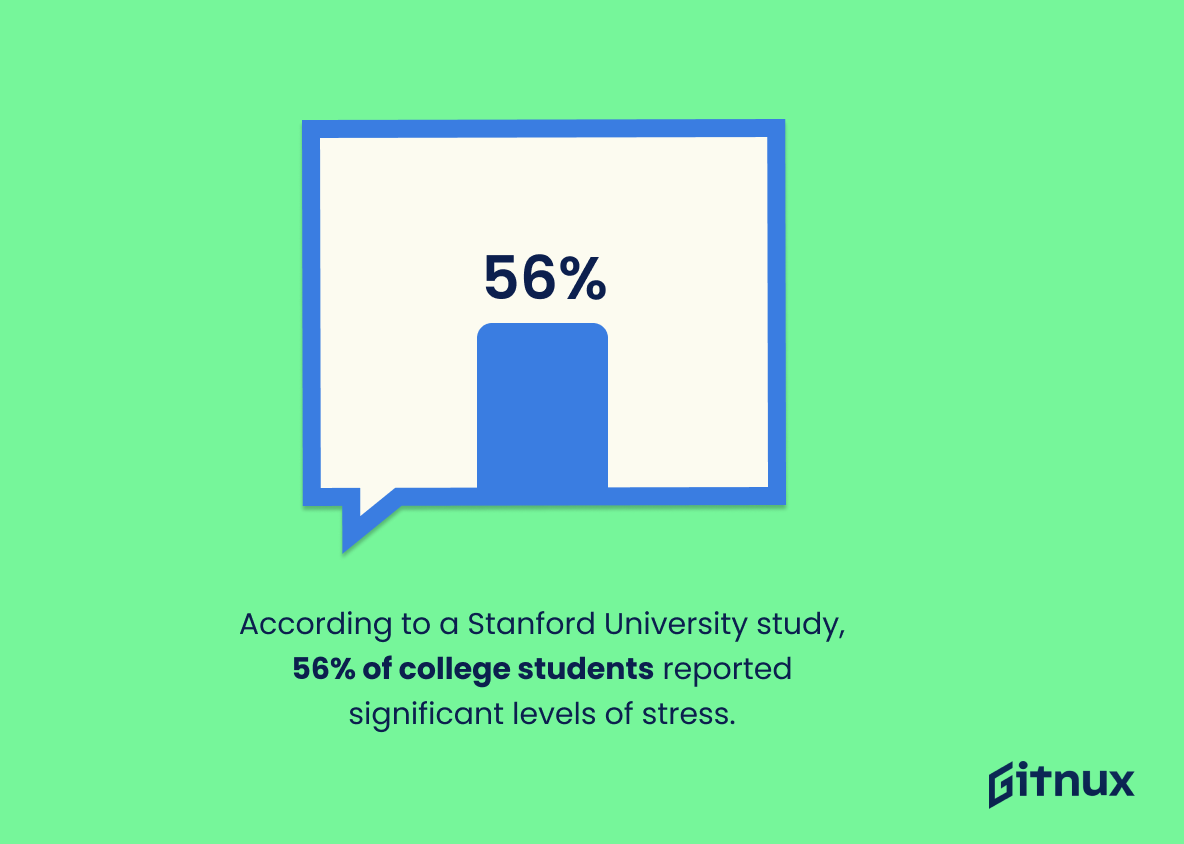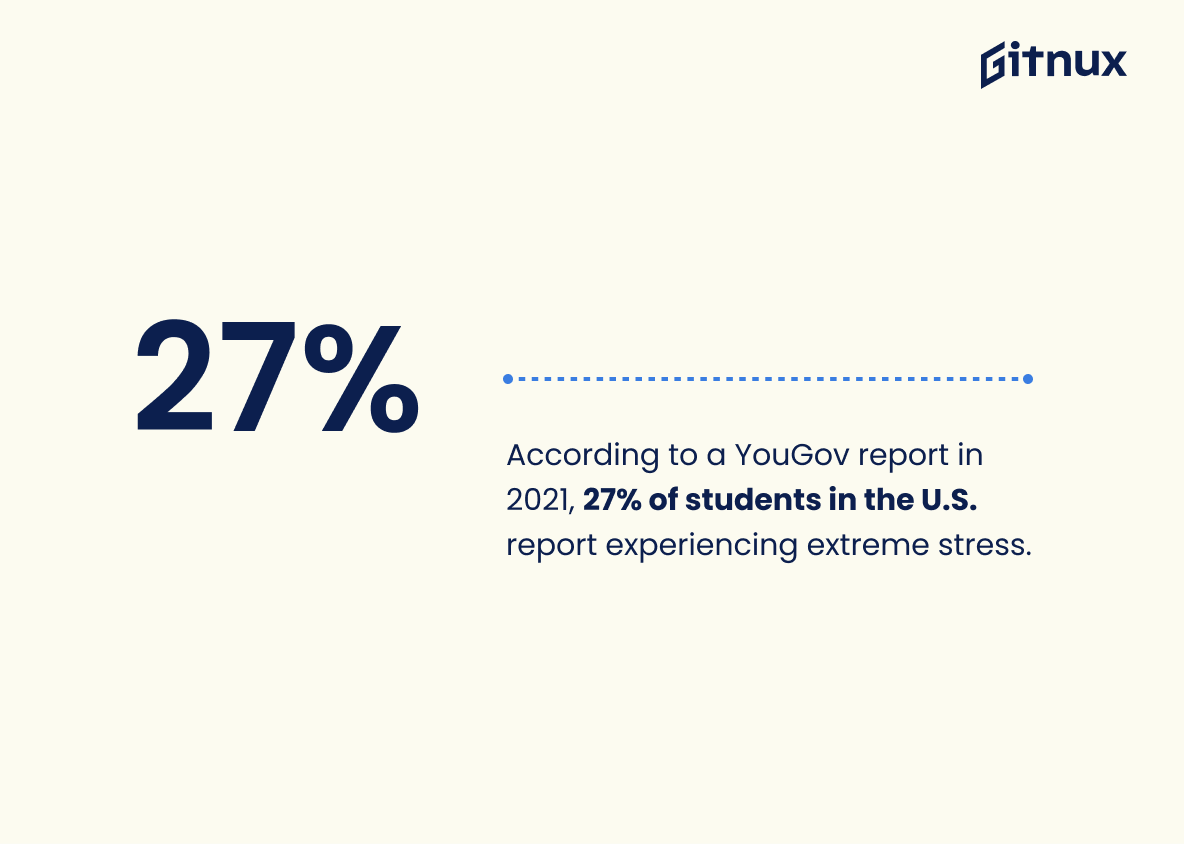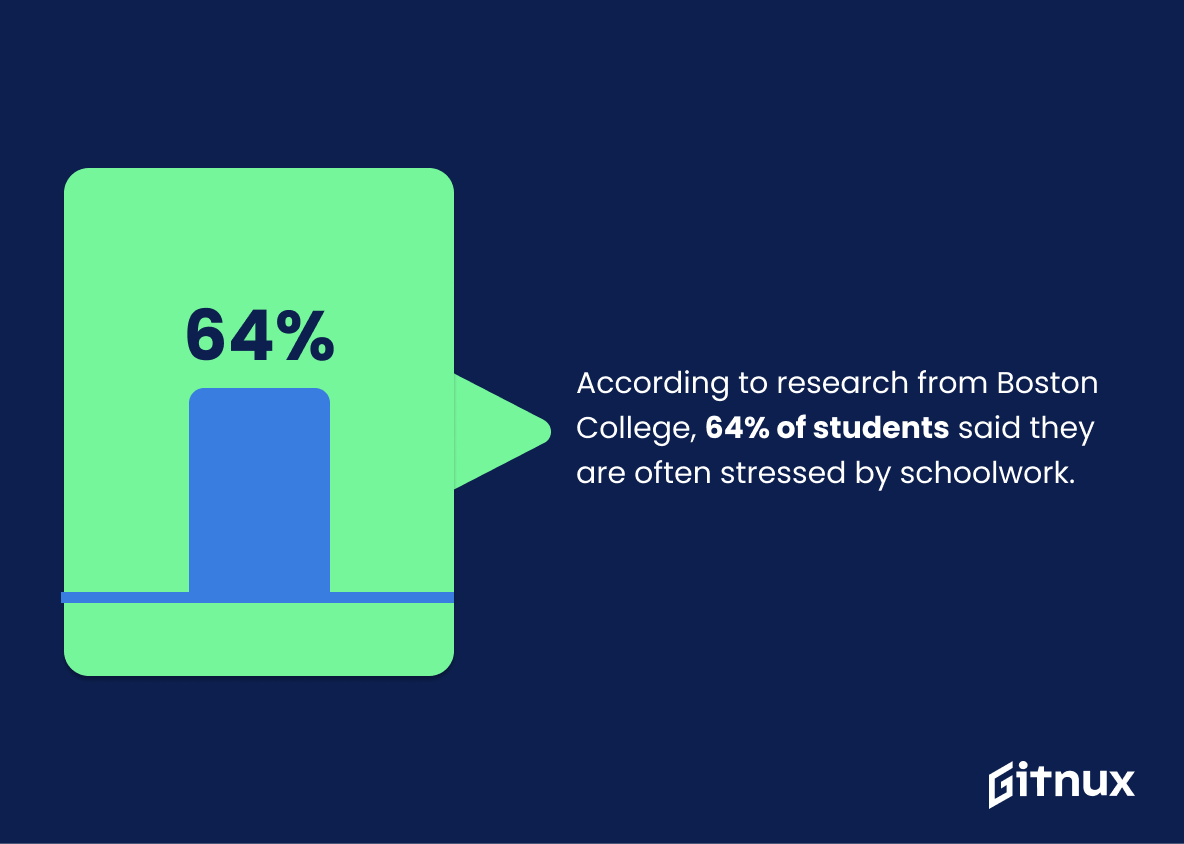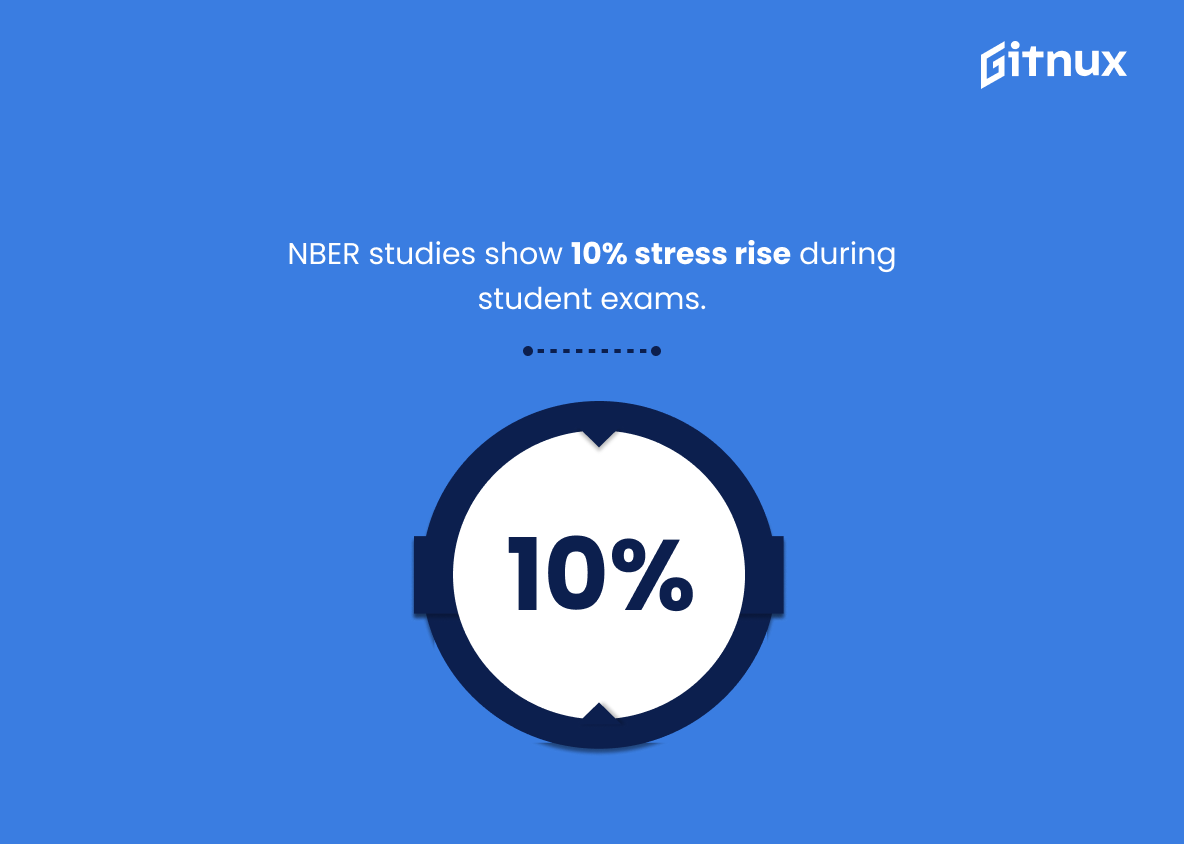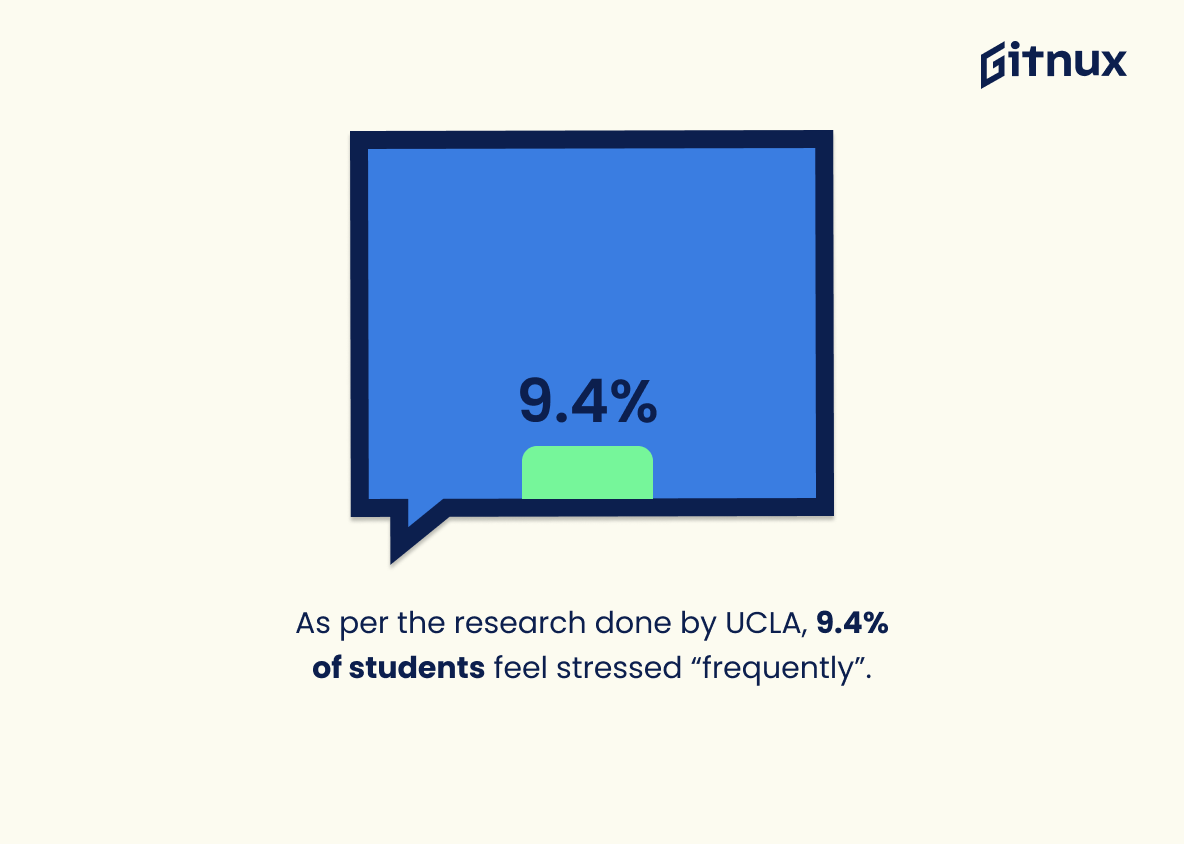With the growing complexity of academic life, stress has become a widely common factor amongst students worldwide. From strenuous course load, high expectations, to juggling between social and academic life, students are facing significant strain that remarkably affects their mental health. This blog post delves into the insightful world of stress in students statistics, revealing its prevalence, sources, and impact in today’s academic scenario. With numbers speaking louder than words, it’s time to explore the gravity of student stress and steps necessary to combat this burgeoning issue.
The Latest Stress In Students Statistics Unveiled
According to the National College Health Assessment, 45.1% of students reported that academic stress resulted in lower grades or dropped courses.
In the realm of disquieting revelations, the National College Health Assessment uncovers a student stress epidemic leaving its mark on academic performance. Notably, a staggering 45.1% of students attribute sinking grades or completely dropped courses to the weight of academic stress. This stark figure underscores the profound magnitude of the problem in our educational landscape, revealing how stress isn’t merely a mind game – it mounts a full-scale attack on academic achievements, leaving a trail of missed opportunities in its wake. Consequently, translating this critical statistic into a tangible narrative about student stress is the call of the hour, not only for shedding light on the pressing issue but also for spurring change to cultivate healthier educational environments.
The American Institute of Stress states that 8 in 10 college students experience frequent stress.
Highlighting the findings from the American Institute of Stress underscores the imposing reality that stress is an extremely common phenomenon among college students. Accentuating this research means we can uncover the pervasive issue that a whopping 80% of student population grappling with regular stress, displaying the sheer magnitude of this concern. This revelation serves as a wake-up call for educational institutions, parents and healthcare professionals to act upon, stressing the urgent need for effective stress-management strategies and mental health support infrastructure within the academic framework. The statistic, in this context, forms a potent cornerstone around which further discussion can be sculpted, whether it is delving deeper into the causes, impacts or remedies.
According to a study published in the Frontiers in Psychology journal, nearly one-third of students reported symptoms of burnout.
Highlighting the research published in the Frontiers in Psychology journal, which evidences that nearly one-third of students experience symptoms of burnout, casts a sharp light onto the startling gravity of stress amongst this demographic. In the panorama of stress in students’ statistics, this poignant figure serves as a resounding alarm bell. This statistic not only underlines the extensive reach of student stress, but it also underscores the urgent necessity for practical solutions, mindful interventions, and a potential systemic overhaul to support young individuals in their academic pursuits, and safeguard their mental health and well-being.
As per American College Health Association in 2020, 85.6% of college students felt overwhelmed by all they had to do.
Highlighting this particular statistic underscores the pervasive issue of student stress, illustrating just how many college students find themselves inundated by their responsibilities. This high number – 85.6% according to the American College Health Association – paints a vivid picture of a deeply ingrained phenomenon in academia that extends beyond just a handful of students.
In the context of a blog post about stress in students, this statistic serves as a concrete signpost warning educators, parents, peers, and the students themselves, about the potentially overwhelming nature of college life. Taking into account this alarming figure, it’s evident that stress management and mental health support need to be core elements in the educational ecosystem to promote healthier student lives.
New York Times report shows that 52% of U.S. college students reported feeling anxious, with 21% seeking treatment.
In the sphere of student stress statistics, the revelation from the New York Times that more than half of U.S. college students (52%) confessed to experiencing anxiety, with almost a quarter (21%) actively pursuing treatment, serves as a tornado siren, raising an urgent alert about an existing crisis. This statistic paints an evocative portrait of the unprecedented pressure that contemporary students endure, punctuating the narrative of the blog post with compelling evidence. The harrowing figures are not just mere numbers but pulsating heartbeats, beat by beat, revealing the intensity and prevalence of anxiety in the student population. It helps us understand on a deeper level the intense stress faced by students, prompting more impactful conversations surrounding mental health, societal pressures, and the need for comprehensive support systems within our educational institutions.
A 2019 BBC survey found that 46% of UK students have a mental health disorder, with stress being a common symptom.
In the realm of stress in student statistics, one would be hard pressed to ignore the startling revelation from a 2019 BBC survey. It unveiled a glaring truth with its conclusion that almost half–a jaw-dropping 46%–of UK students wrestle with a mental health disorder, stress often rearing its ugly head as a prevalent symptom. This figure doesn’t whisper but screams for attention and intervention, casting a spotlight on the crucial discussion about the mental health implications of academic pressures. This statistic serves to underscore not only the magnitude of the issue, but also adds urgency to our continued quest for effective coping mechanisms, supportive environments, and strategies to help alleviate the burden of stress plaguing our students today.
According to a Stanford University study, 56% of college students reported significant levels of stress.
In the world of tumultuous student life, drawing attention towards the Stanford University study divulges that stress is not just an anecdotal evidence but a prevalent reality for more than half of college students. An important revelation, that 56% of students experience significant stress, becomes a cornerstone for discussions related to stress management strategies for this population. It’s not merely a number; rather it transforms the frequently muted narratives of student stress into a quantifiable, undeniable truth, making it essential for comprehensive understanding in any dialogue regarding student stress statistics.
According to a YouGov report in 2021, 27% of students in the U.S. report experiencing extreme stress.
Delving into the realm of Stress In Students Statistics, the YouGov report breaks the ice, spotlighting that an alarming 27% of U.S. students grapple with extreme stress in 2021. This statistic is a consequential beacon, dramatizing the plight of the student population. It not merely multiples our understanding of the situation but also punctuates the dire need for effective stress management strategies and mental health support in educational institutions. Moreover, it forms a solid groundwork for a larger discussion about the factors causing this stress, its impact on academic achievements, and comprehensive solutions to remedy the concern. This high percentage of students experiencing stress is a clarion call for all — educational institutions, parents, and policymakers — to step up their game in creating a robust and holistic support system.
According to research from Boston College, 64% of students said they are often stressed by schoolwork.
Delving into the numbers from Boston College, it’s startling to discover that over half, specifically 64%, of students frequently feel the burden of stress related to their academic responsibilities. This stat serves as the backbone for our discussion around the persistent issue of academic stress amongst students, shedding light on the enormity of the problem. Within a blog post focusing on student stress statistics, this figure is a critical puzzle piece, opening an avenue for understanding the scale and depth of this stress epidemic in student communities. It catalyzes a deeper conversation about solutions and builds a compelling case for prioritizing student mental health.
Studies conducted by the National Bureau of Economic Research (NBER), student exam periods are associated with a 10% increase in stress levels.
Illuminating the crux of this enlightening statistic, it’s intriguing to note how student exam periods are intertwined with a 10% ascension in stress levels, per the insightful studies conducted by the National Bureau of Economic Research (NBER). As we delve into the enriching world of student stress statistics on this blog post, this pivotal revelation solidifies its core relevance. Counterpointing the tangible impact examinations can have on students’ mental health, it presents a numerical perspective that unequivocally underscores the necessity for support mechanisms and stress management strategies. This 10% hike isn’t just a number, it’s a multitude of sleepless nights, frazzled nerves, and the relentless pursuit of academic success adding colour to our overall discussion around student stress. Undeniably, this reinforces the critical importance of addressing student stress and heralds an urgent call for preventive and remedial action.
According to the CDC, during August 2020, 75% of young adults reported experiencing at least one adverse mental or behavioral health symptom, in which stress accounted for a major part.
In the kaleidoscope of student life, stress often emerges as a dominant hue, and the heart of this discussion is underlined by a striking CDC statistic. Dating back to August 2020, it vividly illustrates that 75% of young adults were grappling with at least one adverse mental or behavioral health symptom, with stress orchestrating a major part of the symphony. The relevance of this statistic to our conversation around Stress In Students Statistics is profound. It punctuates our understanding that stress is not an isolated problem, but a pervasive reality straddling the lives of three-quarters of the youth population. Moreover, it conspicuously flags the urgency to address this silent epidemic among students, equipping them with appropriate coping strategies and crucial mental health support.
As per the research done by UCLA, 9.4% of students feel stressed “frequently”.
In the veritable tapestry of stress in student statistics, the data from UCLA unearths a rather pressing concern. Let’s illuminate it – with 9.4% of students reporting to feel stressed “frequently”, the academic landscape seems to be more of a pressure cooker than a garden of knowledge. This nugget of information underscores the pervasive nature of stress among students – an issue that needs immediate attention and action. Like an unlit corner, these figures highlight an often overlooked aspect of student life, urging universities and policymakers to foster a more supportive campus environment.
Studies conducted by the University of Minnesota found that 40% of students reported stress had significantly impacted their academic performance.
Unraveling the layers of this statistic from the University of Minnesota paints a vivid picture of the invisible burden students carry – stress. A startling 40% of students disclosed that their academic performance was considerably hampered by stress. Not just a mere feeling, it’s an impediment causing a ripple effect on their educational outcomes. In a blog discussing stress among students, this statistic forms a crucial cornerstone. It underscores the pervasiveness of stress and its profound impact, thus amplifying the urgency to address and devise solutions for this pressing issue.
Conclusion
Understanding and addressing stress in students has never been more crucial, as statistics continue to underscore its pervasive and detrimental effects on academic performance, personal development, and mental health. These figures serve as a wakeup call to educators, parents, and policymakers that stress is a profound issue and can no longer be relegated to the sidelines. It’s essential that we take collective action to institute effective strategies, provide comprehensive support systems, and cultivate an education environment conducive to holistic well-being. While the statistics present a concerning picture, they also pave the way for informed interventions that could dramatically change young lives for the better.
References
0. – https://www.www.acha.org
1. – https://www.boynton.umn.edu
2. – https://www.www.bbc.co.uk
3. – https://www.www.nber.org
4. – https://www.www.frontiersin.org
5. – https://www.today.yougov.com
6. – https://www.www.stress.org
7. – https://www.www.nytimes.com
8. – https://www.www.heri.ucla.edu
9. – https://www.news.stanford.edu
10. – https://www.www.bc.edu
11. – https://www.www.cdc.gov
12. – https://www.www.nami.org
